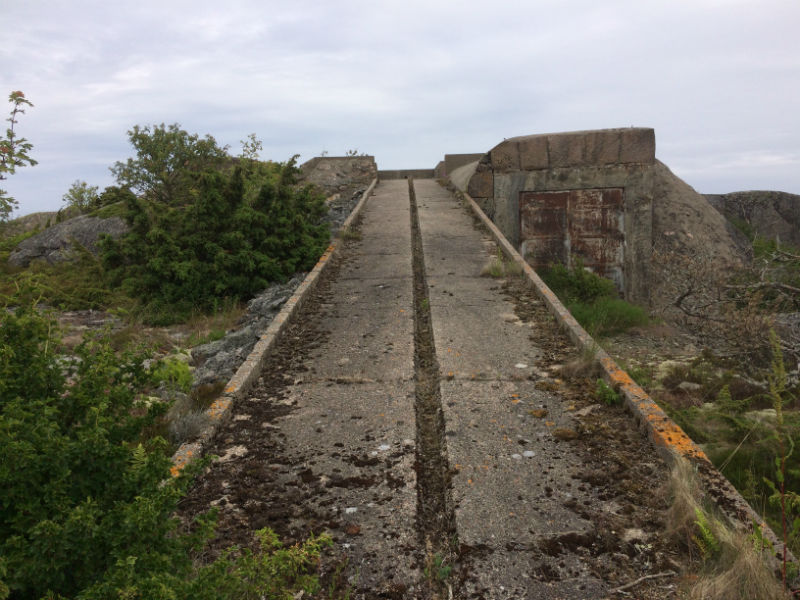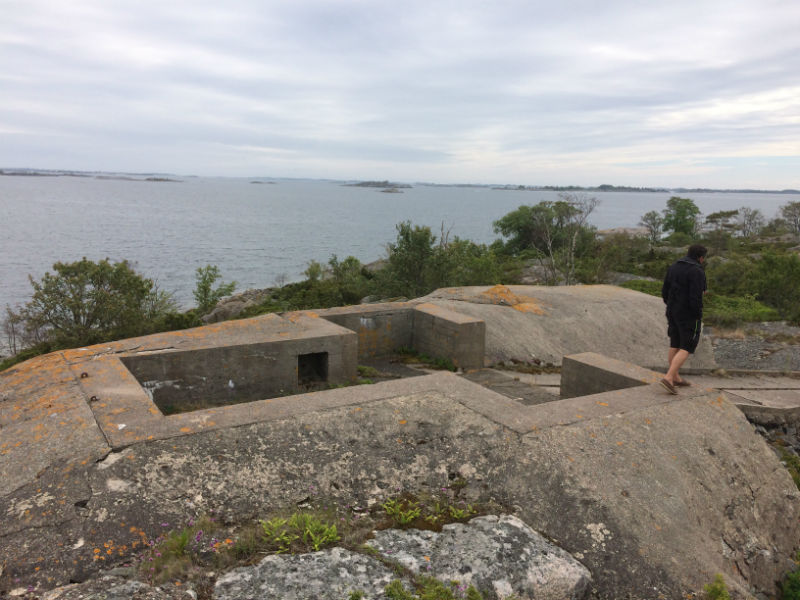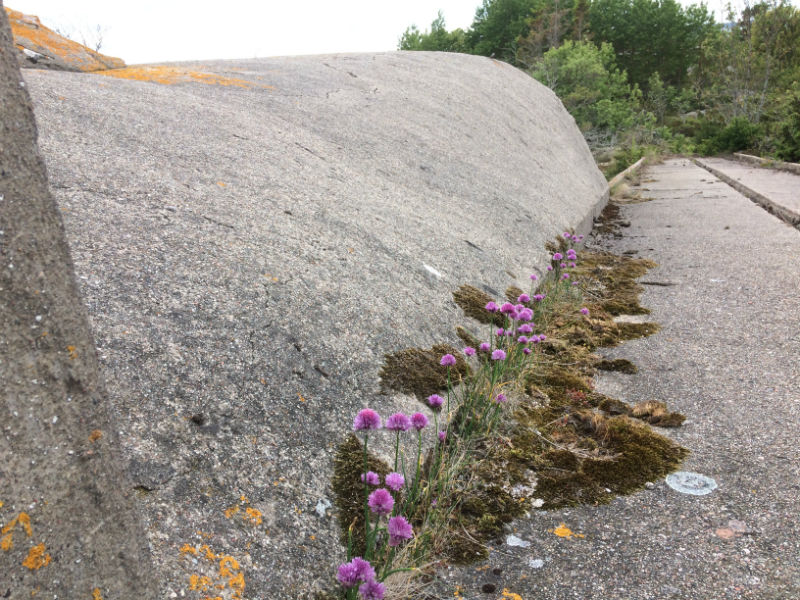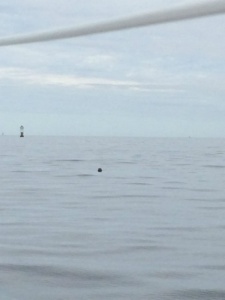 The plan for today was to head a bit further north to an island that would make a good jumping-off point for tomorrow’s Great Sea Crossing, but we were foiled by the wind, which resolutely refused to blow. It particularly refused to blow while we were sitting in the middle of a shipping channel with cruise liners bearing down on us from both directions, as silent as icebergs but a hell of a lot faster. At this point we decided to swallow our pride and motor to a closer spot. We did, however, see a seal as a reward for our virtue in sitting in a near-motionless boat for so long. Actually, we saw two seals, but the second one flapped its wings and flew away while Wolfgang was trying to get a photo of it.
The plan for today was to head a bit further north to an island that would make a good jumping-off point for tomorrow’s Great Sea Crossing, but we were foiled by the wind, which resolutely refused to blow. It particularly refused to blow while we were sitting in the middle of a shipping channel with cruise liners bearing down on us from both directions, as silent as icebergs but a hell of a lot faster. At this point we decided to swallow our pride and motor to a closer spot. We did, however, see a seal as a reward for our virtue in sitting in a near-motionless boat for so long. Actually, we saw two seals, but the second one flapped its wings and flew away while Wolfgang was trying to get a photo of it.
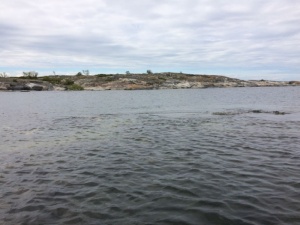 As our new destination, we picked the promisingly named Himmelskär (Heaven Island). Its pearly gates take the form of countless rocks littered about above and just below the surface, so it was very hairy navigating in. The Swedes have a word, “bränning”, which translates rather unpoetically into English as “semi-submerged rock” but in fact refers to a great stone beast which lurks treacherously beneath the surface, detectable only by the spurts of foam that kick up when unsuspecting waves crash into it. The photo below shows a bränning, and the lighter-coloured water indicates the parts that are fully submerged but only just.
As our new destination, we picked the promisingly named Himmelskär (Heaven Island). Its pearly gates take the form of countless rocks littered about above and just below the surface, so it was very hairy navigating in. The Swedes have a word, “bränning”, which translates rather unpoetically into English as “semi-submerged rock” but in fact refers to a great stone beast which lurks treacherously beneath the surface, detectable only by the spurts of foam that kick up when unsuspecting waves crash into it. The photo below shows a bränning, and the lighter-coloured water indicates the parts that are fully submerged but only just.
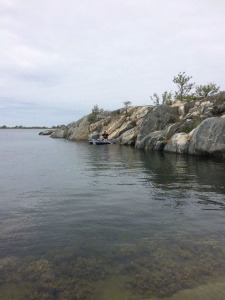 We have a very useful guide to the archipelago which showed us exactly how to enter a nicely sheltered bay, carefully avoiding all the rocks, shallows and bränningar, but even so we found our entry blocked by an unexpected submerged rock. We took ourselves off to another, less protected spot, where we successfully moored, but Wolfgang was annoyed by the existence of the rock that wasn’t marked on the charts that he rowed back in Nils to determine exactly what was going on there and concluded that we had been too far over to the left on our approach and that the rock was in fact the part of the chart marked as shallow.
We have a very useful guide to the archipelago which showed us exactly how to enter a nicely sheltered bay, carefully avoiding all the rocks, shallows and bränningar, but even so we found our entry blocked by an unexpected submerged rock. We took ourselves off to another, less protected spot, where we successfully moored, but Wolfgang was annoyed by the existence of the rock that wasn’t marked on the charts that he rowed back in Nils to determine exactly what was going on there and concluded that we had been too far over to the left on our approach and that the rock was in fact the part of the chart marked as shallow.
After that, having worked up an appetite for rowing, he took us over to the island opposite, where he had spotted what looked like a bunker from the Cold War. On closer inspection, it seems to have been for machine guns. All the doors were welded shut, so we couldn’t get in (just as well, given that I always expect to find skeletons in dark, confined spaces) and flowers have begun to sprout out of the concrete in a very hippyish and symbolic sort of way.
